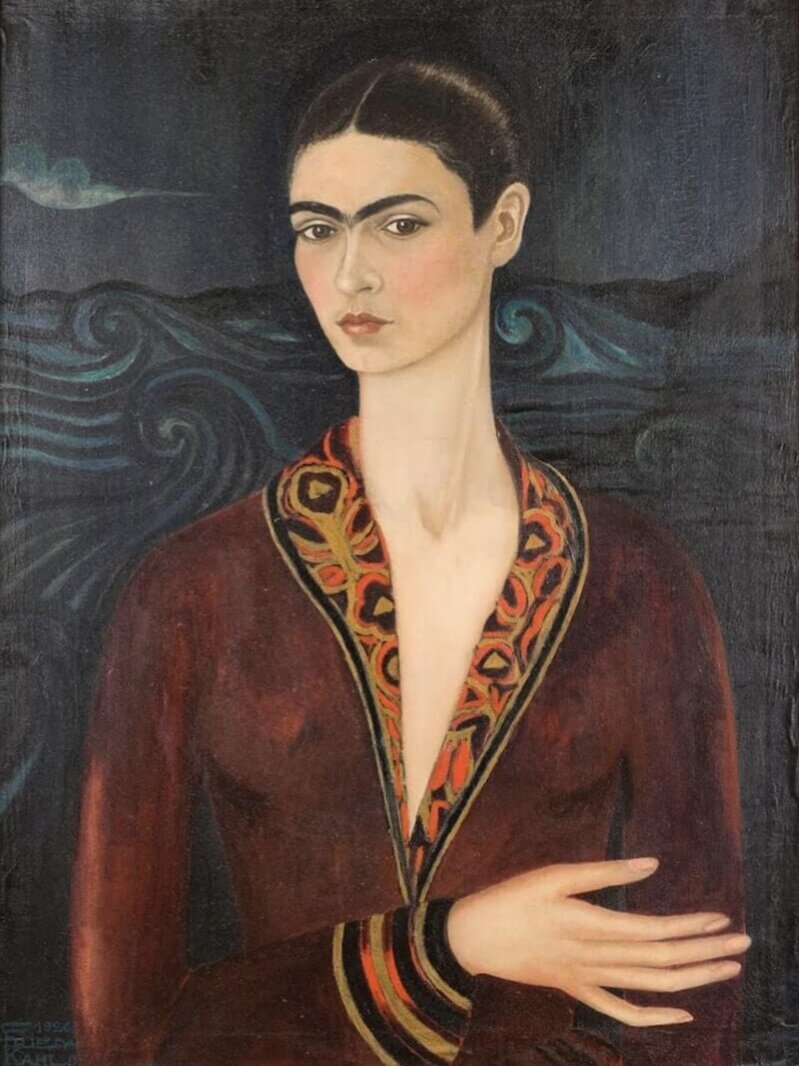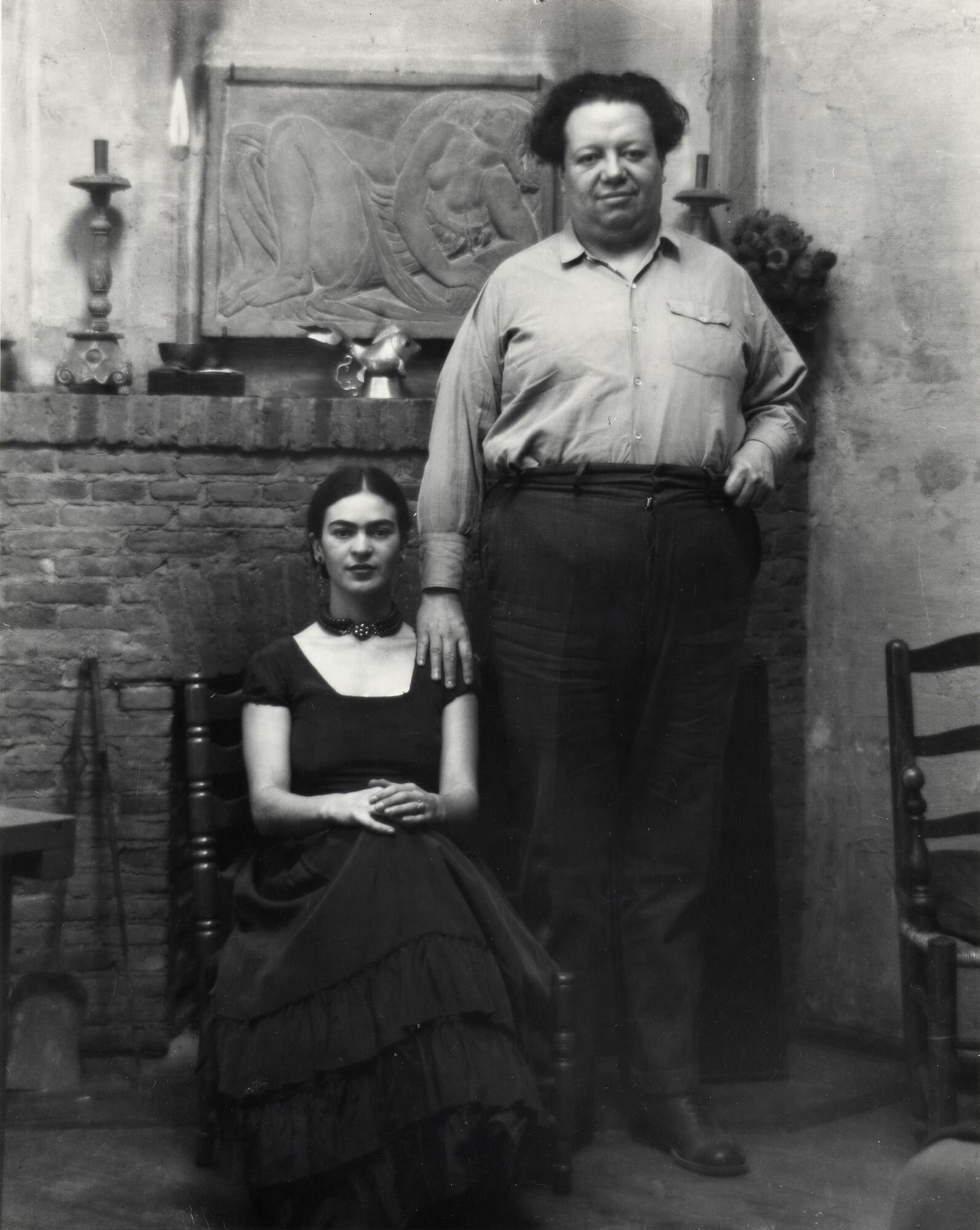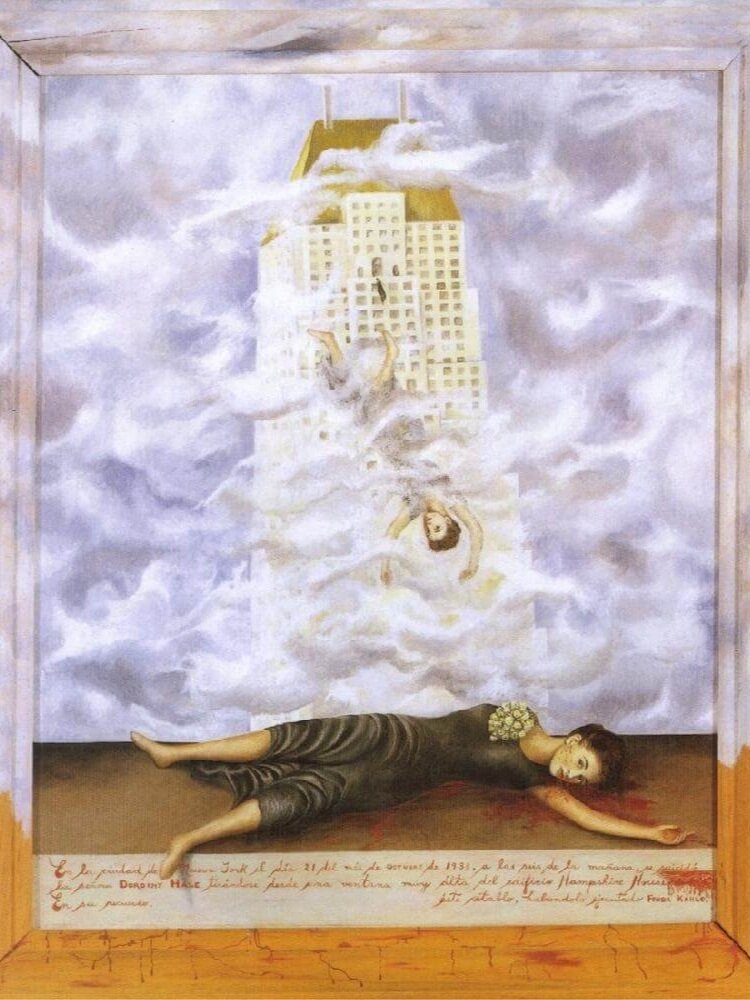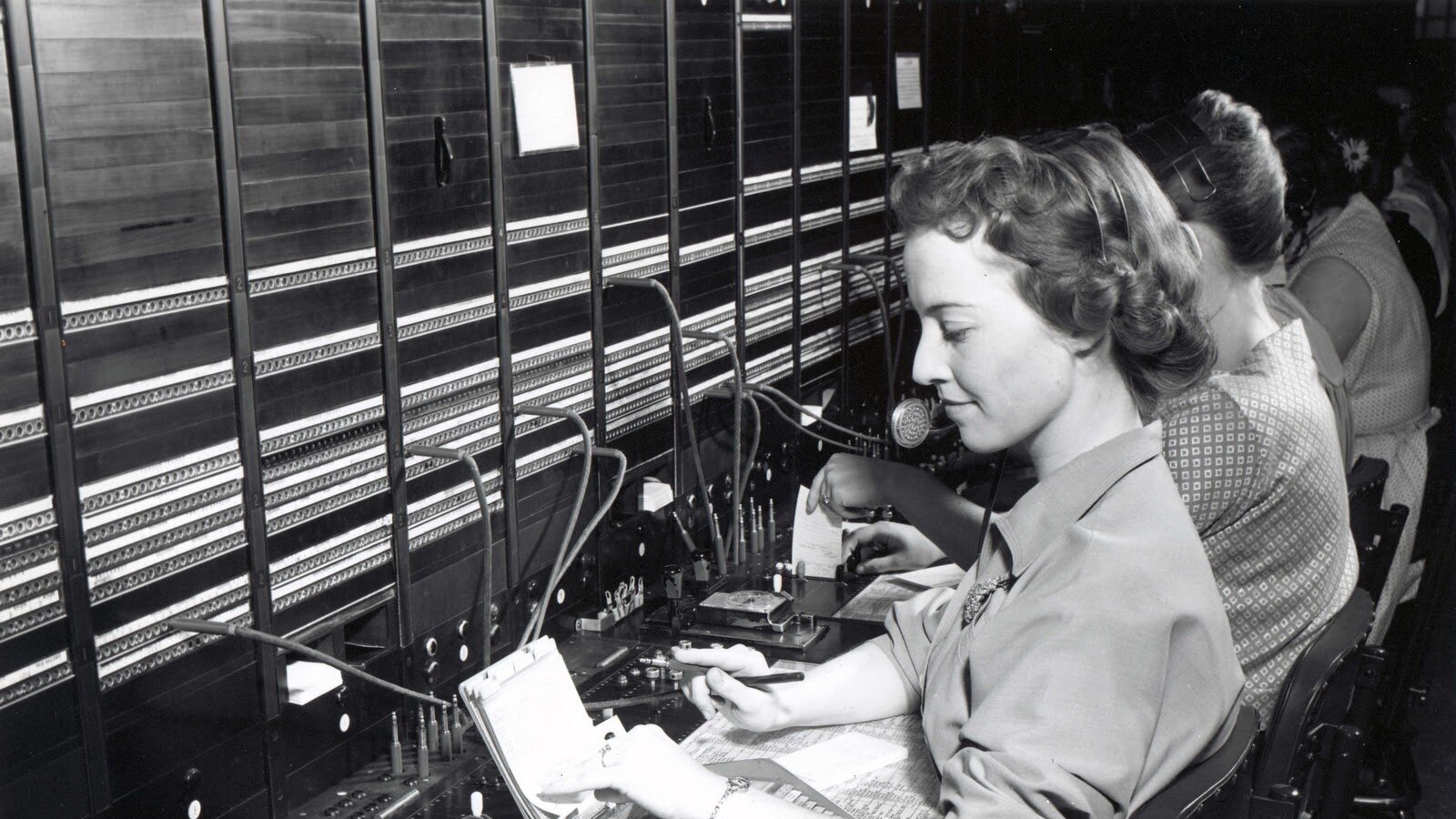
STAGE NOTES
The WICA Blog
#GiveBIG2021
OUR #GIVEBIG 2021 STORIEs
"We became a stronger organization in 2020 because of you..." — Verna Everitt, Executive Director
"We are a community that is richer because of the arts..." — George Henny, WICA Supporter
"The magic between audiences and artists..." — Deana Duncan, Artistic Director
"I have been here since the beginning..." — Karen McInerney
“I felt like Alice in Wonderland the moment I arrived…” — Peggy Gilmer
For more than 25 years WICA has produced, presented, and supported artistic endeavors, educational initiatives, and cultural events that celebrate and enrich the lives of everyone in our region.
With roughly half of our annual income coming from grants, ticket sales, and sponsorships, we depend on our members and donors for all the work we do.
Your support will enable WICA to continue being our region’s premier creative and cultural space.
Thank you!
★ UPDATE ★
The entire WICA Board and Staff have made or pledged to make a gift during GiveBIG!
“WE HAVE REMAINED STEADFAST…”
Ken Pilcher, Board Chair | Apr 29, 2021
OUR #GIVEBIG HEROES
Karen & Dave Anderson | Margaret Anderson | Wendy Ashford | Shelley Barker | Nancy & Roger Barr | Corrine Bayley | Linda Beaumont | Judy Bickel | Audrey & Hunter Black | Dianne Bolton | Alan Breen | Jami Christen | Lauren Collins | Kathleen Conroy | Trilby Coolidge | Jason Dittmer and Mark Cook | Diane Divelbess and Grethe Cammermeyer | Deana A. Duncan | Barbara Dunn | Greg & Val Easton | Marly Eidsness | Verna Everitt | Tom Ewell & Cathy Whitmire | Barb & Jeff Ewing | Robert Finke | Deborah Fisher | William Fisher | Grant Fleming | Sue & Bob Frause | Finn Gatewood | David Gignac | Susan Gilles | Thomas Hall | Tim and Judith Hanson | Shelly Hartle | Paul Hayes & Kim Robinson | Jody Heiken | George Henny | K & G Highberger | Randy Hudson & Georgia Gerber | Wendy Jackson | Catherine James | Sue Jobst | Stacie Johnson | Marion Jouas | Don Krafft | Karen Leeds | Terrel Lefferts, Once Upon A Dance | Sally and Ken Mainville | Ashly McBride | Shirley McClure | Karen McInerney | Angelica Metcalfe | John and Susan Meyer | Dean & Laurie Olmstead | Margaret Peterson | Rock Peterson | Sarah Phillips | Ken Pilcher & Quincy Anderson | Ken Price | Robert & Candy Ramsey | Susan Reis | Rebecca Rickabaugh | Colette & Bob Riggs | Conrad & Jelcy Romberg | Joann Roomes | Sigrid Salo | Ellen Sargent | Pam Schell | Loretta Seybert | Christi Shaffer | Sandra Shipley | Aaron Simpson | Dawn Sorrell-Reddan | Tristan A.B. Steel and Dr. Jeffrey LaGasse | Mira Steinbrecher | Carol Stoel Gammon | Emma Swanson | Charles Terry | The Tierney Family | Yana Viniko | Dennis White | Al Wilcox | Don Zontine
THANK YOU!
Updated 6:00 PM, May 06, 2021
OUR #GIVEBIG 2020 STORIEs
"We have the power to define our future..."
Verna Everitt, Executive Director | Apr 28, 2020
“We are prepared to come roaring back…”
Robert Merry, Board Chair | Apr 24, 2020
OUR #GIVEBIG HEROES
Al Wilcox and Susan Harrington Wilcox | Ann C. McDonald | Ann and Robert Posner | Anonymous, in honor of Staff and Crew of WICA | Barb and Jeff Ewing | Barbara Dunn and David Wilder | Baz Stevens | Beth and Kurt Johnson | Billy and Vanessa Tierney | Bobbe and Jon Bridge | Bruce Bonine | Bruce and Marty Kortebein | Candace Jordan | Carol Lee Bingman | Catherine James | Charles and Linda Bieber | Charles Terry and Betsy MacGregor | Christie Lynk | Cindy Conklin | Cindy Rutstein, in memory of Eleanor Marx Braun | Clare Christiansen | Cynthia and John Shelton | Dave and Barb Bennett | Dave and Karen Anderson | David Mayer, in honor of Judy Hoffman | Dean Olmstead and Laurie Leonetti | Deana Duncan | Deborah Fisher and Mark Nyberg | Deborah Maietta | Debra Drake | Debra Waterman and Michael Cramer | Dennis White | Dianne Bolton | Don and Anne Zontine | Don and Laura Boram, in memory of QuinSerra Stanley | Doug and Dana Kelly | Dwight Zehm, Julie O'Brien, and Colleen Zehm | Elizabeth and Stephen Guss | Ellen Koutsky | Ellen Sargent | Finn Gatewood | Gabriele Dickmann | Gail Dapont | Gail Van Norman | Gary and Diana Carew | Gary and Liz Ketcheson | George and Lynne Jensen | Gordy and Toni Anderson | Graham Johnson | Grant Fleming, in honor of Mary Jane Forbes | Gregg Herrington | Holly Harlan, in memory of Judith Harlan | Jaci and David Mach | Jackie and Patricia Pritchard | Jane and Joe Jeszeck | Janet Hall and Nicole Luce | Jason Dittmer and Mark Cook | J L Viniko | Jeffrey Rogers | Jelcy and Conrad Romberg | Jerry and Emmy Swanson | Jim and Melody Carney | Jim Hurley | Joan Kiefner | Joann Qintana | Joann Roomes | John and Susan Meyer | Judy Bickel | Judy and Bill Morton | Karen Benson, in memory of Peter Benson | Karen and William Leeds | Karen McInerney | Kathleen Conroy and Anne Preston | Kathleen Petrich | Kathleen and Clyde Wilson | Kathryn S. Beaumont | Kathy Stella | Ken Pilcher and Quincy Anderson | Ken Price | Kirk and Gloria Highberger, in memory of John Pine | Kitty Adams | Kristin and Earl Lasher | Larry and Karen Graham | Lauren Collins | Linda Beaumont and Steve Badanes | Linda McArthur, memory of Tom McArthur | Lynn Hagerman and Jim Hummer | Margaret Andersen and Bob Wolters | Marian A Myszkowski | Marion and Jan-Marc Jouas | Mark and Sue Ross, in memory of Pauline Schlotterbeck | Mark Findlay | Marly Eidsness and Julie Hadden | Mary Ann Mansfield | Mary Ellen and Frederick Burgomaster | Mary L. Setsodi, in memory of Rob Richardson | Meg Noble Peterson | Melanie Bacon | Melene Thompson | Michael Stilwell | Mike and Jami Christen | Mike and Janice O'Mahony, in honor of Judy Morton | Mira Steinbrecher, in honor of WICA Volunteers | Museo Gallery | Nancy Baggott | Nancy Barr | Nancy Long and Butch Carber | Neal Clark | Olena Hodges | Pam Schell | Pamela Engler | Robert Finke and Lynn Wenzel | Robert and Nancy McClain | Robert and Susan Merry | Rock and Maggie Peterson | Sander Kallshian and Matt Tamayo, in honor of Amy Walker | Sarah Phillips | Shelley Hartle and Mike McVay, in memory of Mona Reardon | Shirley McClure | Steve and Karen Gordon | Steven and Patricia Bradley | Sue Frause | Susan and Stephen Bennett | Susan Welty | Sue Todd Yates | Talia Toni Marcus, in honor of Michael Nutt and Diane Kendy | Thomas and Marshall Hall | Tim and Judith Hanson | Tom and Ako Shimozato | Tom and Claudia Walker | Toyan Copeland | Tristan Steel and Jeffrey LaGasse | Valerie Johnson | Vern and Martha Olsen | Verna and Tim Everitt | Wendy Saro Ashford | Winston Addis
THANK YOU!
BIOGRAPHY | Frida Kahlo
Frida Kahlo was considered one of Mexico's greatest artists who began painting mostly self-portraits after she was severely injured in a bus accident. Kahlo later became politically active and married fellow communist artist Diego Rivera in 1929. She exhibited her paintings in Paris and Mexico before her death in 1954.
Family, Education and Early Life
Kahlo was born Magdalena Carmen Frieda Kahlo y Calderón on July 6, 1907, in Coyoacán, Mexico City, Mexico.
Kahlo's father, Wilhelm (also called Guillermo), was a German photographer who had immigrated to Mexico where he met and married her mother Matilde. She had two older sisters, Matilde and Adriana, and her younger sister, Cristina, was born the year after Kahlo.
Around the age of six, Kahlo contracted polio, which caused her to be bedridden for nine months. While she recovered from the illness, she limped when she walked because the disease had damaged her right leg and foot. Her father encouraged her to play soccer, go swimming, and even wrestle — highly unusual moves for a girl at the time — to help aid in her recovery.
In 1922, Kahlo enrolled at the renowned National Preparatory School. She was one of the few female students to attend the school, and she became known for her jovial spirit and her love of colorful, traditional clothes and jewelry.
While at school, Kahlo hung out with a group of politically and intellectually like-minded students. Becoming more politically active, Kahlo joined the Young Communist League and the Mexican Communist Party.
Frida Kahlo's Accident
Self Portrait in a Velvet Dress, 1926
On September 17, 1925, Kahlo and Alejandro Gómez Arias, a school friend with whom she was romantically involved, were traveling together on a bus when the vehicle collided with a streetcar. As a result of the collision, Kahlo was impaled by a steel handrail, which went into her hip and came out the other side. She suffered several serious injuries as a result, including fractures in her spine and pelvis.
After staying at the Red Cross Hospital in Mexico City for several weeks, Kahlo returned home to recuperate further. She began painting during her recovery and finished her first self-portrait the following year, which she gave to Gómez Arias.
Frida Kahlo's Marriage to Diego Rivera
In 1929, Kahlo and famed Mexican muralist Diego Rivera married. Kahlo and Rivera first met in 1922 when he went to work on a project at her high school. Kahlo often watched as Rivera created a mural called The Creation in the school’s lecture hall. According to some reports, she told a friend that she would someday have Rivera’s baby.
Kahlo reconnected with Rivera in 1928. He encouraged her artwork, and the two began a relationship. During their early years together, Kahlo often followed Rivera based on where the commissions that Rivera received were. In 1930, they lived in San Francisco, California. They then went to New York City for Rivera’s show at the Museum of Modern Art and later moved to Detroit for Rivera’s commission with the Detroit Institute of Arts.
Kahlo and Rivera’s time in New York City in 1933 was surrounded by controversy. Commissioned by Nelson Rockefeller, Rivera created a mural entitled “Man at the Crossroads” in the RCA Building at Rockefeller Center. Rockefeller halted the work on the project after Rivera included a portrait of communist leader Vladimir Lenin in the mural, which was later painted over. Months after this incident, the couple returned to Mexico and went to live in San Angel, Mexico.
Never a traditional union, Kahlo and Rivera kept separate, but adjoining homes and studios in San Angel. She was saddened by his many infidelities, including an affair with her sister Cristina. In response to this familial betrayal, Kahlo cut off most of her trademark long dark hair. Desperately wanting to have a child, she again experienced heartbreak when she miscarried in 1934.
Kahlo and Rivera went through periods of separation, but they joined together to help exiled Soviet communist Leon Trotsky and his wife Natalia in 1937. The Trotskys came to stay with them at the Blue House (Kahlo's childhood home) for a time in 1937 as Trotsky had received asylum in Mexico. Once a rival of Soviet leader Joseph Stalin, Trotsky feared that he would be assassinated by his old nemesis. Kahlo and Trotsky reportedly had a brief affair during this time.
Kahlo divorced Rivera in 1939. They did not stay divorced for long, remarrying in 1940. The couple continued to lead largely separate lives, both becoming involved with other people over the years.
ARTISTIC CAREER
The Suicide of Dorothy Hale, 1938
While she never considered herself a surrealist, Kahlo befriended one of the primary figures in that artistic and literary movement, Andre Breton, in 1938. That same year, she had a major exhibition at a New York City gallery, selling about half of the 25 paintings shown there. Kahlo also received two commissions, including one from famed magazine editor Clare Boothe Luce (The Suicide of Dorothy Hale), as a result of the show.
In 1939, Kahlo went to live in Paris for a time. There she exhibited some of her paintings and developed friendships with such artists as Marcel Duchamp and Pablo Picasso.
Kahlo received a commission from the Mexican government for five portraits of important Mexican women in 1941, but she was unable to finish the project. She lost her beloved father that year and continued to suffer from chronic health problems. Despite her personal challenges, her work continued to grow in popularity and was included in numerous group shows around this time.
In 1953, Kahlo received her first solo exhibition in Mexico. While bedridden at the time, Kahlo did not miss out on the exhibition’s opening. Arriving by ambulance, Kahlo spent the evening talking and celebrating with the event’s attendees from the comfort of a four-poster bed set up in the gallery just for her.
After Kahlo’s death, the feminist movement of the 1970s led to renewed interest in her life and work, as Kahlo was viewed by many as an icon of female creativity.
KAHLO’S DEATH
About a week after her 47th birthday, Kahlo died on July 13, 1954, at her beloved Blue House. There has been some speculation regarding the nature of her death. It was reported to be caused by a pulmonary embolism, but there have also been stories about a possible suicide.
Kahlo’s health issues became nearly all-consuming in 1950. After being diagnosed with gangrene in her right foot, Kahlo spent nine months in the hospital and had several operations during this time. She continued to paint and support political causes despite having limited mobility. In 1953, part of Kahlo’s right leg was amputated to stop the spread of gangrene.
Deeply depressed, Kahlo was hospitalized again in April 1954 because of poor health, or, as some reports indicated, a suicide attempt. She returned to the hospital two months later with bronchial pneumonia. No matter her physical condition, Kahlo did not let that stand in the way of her political activism. Her final public appearance was a demonstration against the U.S.-backed overthrow of President Jacobo Arbenz of Guatemala on July 2, 1954.
SOURCE: Biography
What Is Public Opinion Polling and Why Is It Important?
What's a public opinion poll?
A scientific, nonbiased public opinion poll is a type of survey or inquiry designed to measure the public's views regarding a particular topic or series of topics. Trained interviewers ask questions of people chosen at random from the population being measured. Responses are given, and interpretations are made based on the results. It is important in a random sample that everyone in the population being studied has an equal chance of participating. Otherwise, the results could be biased and, therefore, not representative of the population. Representative samples are chosen in order to make generalizations about a particular population being studied.
Why are opinion polls important?
Polls tell us what proportion of a population has a specific viewpoint. They do not explain why respondents believe as they do or how to change their minds. This is the work of social scientists and scholars. Polls are simply a measurement tool that tells us how a population thinks and feels about any given topic.
This can be useful in helping different cultures understand one another because it gives the people a chance to speak for themselves instead of letting only vocal media stars speak on behalf of all. Opinion polling gives people who do not usually have access to the media an opportunity to be heard.
How are the surveys conducted?
Two of the most common ways in which public opinion polls are conducted are telephone and face-to-face interviews. Other methods include mail, online, and self-administered surveys.
How are face-to-face samples selected?
Such surveys, also known as “in-person” interviews, are conducted with the interviewer and the interviewee next to each other. The interviewer reads material from the questionnaire and records the interviewee’s responses. At times the interviewer may hand a card to the respondent for him/her to select a response(s).
Scientific face-to-face surveys are normally conducted using geographic-area probability sampling. Some refer to this as “block sampling.” This is done by dividing a given population into blocks of roughly equal population density. Each block is further divided into blocks until a single household is chosen at random, and then a single respondent is randomly chosen from the household.
How does one read opinion polls?
Percentages in an opinion poll reflect the proportion of a given population that has a particular response. If the results of a scientific poll claiming a 3-point margin of error say that 30% of Americans like ice cream, this means that if we asked all Americans this question, we would expect between 27% and 33% to say they like ice cream.
How are scientific polls different from other polls?
When a radio or TV station asks its listeners to call in to vote on a particular issue, the results of this activity are not scientific because the sample is not representative. The sample reflects only the people who happen to be watching or listening to the show and are motivated to call in. This cannot be generalized to represent the whole population because the respondents were not randomly selected, and therefore, they are not representative.
RELATED PROGRAMMING: ROBERT MERRY WITH PETER HART | APR 23, 2021
BIOGRAPHY | SAM SHEPARD
The Farmer’s Son
Born in Illinois in 1943, Samuel Shepard Rogers III (known as Steve Rogers as boy) was the son of a former Army pilot and a teacher. His family moved frequently and eventually settled on an avocado farm in Duarte, California. Duarte would become the suburb where True West takes place. Shepard’s father became more alcoholic and nomadic, like the absent father that hovers over True West and other Shepard plays. Shepard worked as a stablehand, an orange picker, and a sheep shearer while attending high school and later studied agriculture at nearby Mt. San Antonio Junior College. He dropped out of school to join a travelling theatre company and eventually moved to New York City.
Rock and Roll Playwright
In New York, 19-year-old Shepard found inspiration in rock, jazz, and Samuel Beckett’s plays. He worked as a waiter at the Village Gate nightclub, shared an apartment with the son of jazz legend Charles Mingus, wrote songs with John Cale and Bob Dylan, and played drums for a rock group called The Holy Modal Rounders. Reflecting on this time, he later told an interviewer, “I got into writing plays because I had nothing else to do. So I started writing to keep from going off the deep end.” In 1964, his first play Cowboys received a favorable review from The Village Voice and launched his theatre career. Informed by Jackson Pollock's abstract expressionism and science fiction, his early plays were poetic and hallucinogenic, often incorporating rock and jazz music. He worked in experimental downtown spaces such as La Mama, Cafe Cino, and the Open Theatre, winning six Obie (off-Broadway) Awards over the next few years. In 1969 he married actress and musician O-Lan Jones, and they remained married until 1983. His passion remained divided between theatre and music, and in 1975 Shepard joined a group of musicians (including Joni Mitchell and Joan Baez) to tour with Dylan’s Rolling Thunder Road.
Playwright-in-Residence
Theatre ultimately won out when Shepard opted to settle in San Francisco as playwright-in-residence at the Magic Theatre in 1975. Over the next 10 years, he wrote his most seminal plays, including Fool for Love, True West, and Buried Child. Shepard recalled his father coming to a performance of the latter play and berating the actors on stage. “He took it personally and he was drunk... he was kicked out and then was readmitted once he confessed to being my father. And then he started yelling at the actors again.” By the mid-1980s, as he reached his forties, Shepard was the second most widely-performed American playwright after Tennessee Williams.
WATCH: REMEMBERING SAM SHEPARD
WATCH: SAM SHEPARD ON HIS FAMILY
The Intrepid Artist-Cowboy
In addition to play-writing, Shepard had a successful career as an actor. His first film role was as a dying farmer in Days of Heaven (1978). He appeared in Lewis Carlino’s Resurrection in 1980. His breakthrough came playing Chuck Yeager in The Right Stuff (1983). Biographer John J. Winters wrote that this role established Shepard’s on-screen persona as “the intrepid artist-cowboy of popular imagination,” which would blur with his writing. Other notable movies include Baby Boom (1987), Steel Magnolias (1989), and the Ethan Hawke Hamlet (2000) in which he played Hamlet’s father. He was last seen as the family patriarch in the 2017 Netflix series “Bloodline.” He also wrote several screenplays, including Wim Wenders’s Paris, Texas (1984 Cannes Film Festival Winner) and Silent Tongue (1994), a Western that he also directed.
A Western Sunset
Sam Shepard and Jessica Lange began a decades-long relationship in 1983 and had two children: Hannah and Samuel Walker. The two broke up in 2009 but did not announce that they had parted ways until 2011.
In 2000, Shephard bought a small farm in Kentucky, where he raised horses, continued writing, and enjoyed a low-profile life. Shepard died in 2017 from complications of amyotrophic lateral sclerosis (ALS), or Lou Gehrig’s disease. He left behind more than 55 plays, two collections of short stories, and a novel.
SOURCE: Roundabout Theatre Company
RELATED PROGRAMMING: CURSE OF THE STARVING CLASS | JUN 11-20, 2021
ABOUT | EINE KLEINE NACHTMUSIK
The real title for this perennial Mozart favourite is Serenade No. 13 in G, although it’s the informal title of 'Eine Kleine Nachtmusik' that has stuck.
The more common name of this landmark work from 1787 comes courtesy of Mozart’s obsessively organised side, a character trait about which we rarely hear. Despite possessing a brain that could remember music with 100% cent precision, Mozart kept a detailed log of everything he’d written, just in case. The title 'Eine Kleine NachtMusik' is what he jotted next to the entry for this particular serenade written for a string quartet with an added double-bass. It’s another piece from his great purple patch. He was just thirty-one years old.
One frustrating by-product of Mozart’s personal catalogue of all his works is that we also know that there were originally five movements of this work, rather than the four that now survive. Oddly enough, Mozart never published 'Eine Kleine Nachtmusik' in his lifetime. It was left up to his widow, Constanze, to sell it in a job lot of his music to a publisher in 1799, presumably to raise much needed cash. It saw public light of day only in 1827, some forty years after it was written.
SOURCE: ClassicFm









“…arts and culture contributes $877.8 billion (or 4.5%) to the nation’s gross domestic product…”